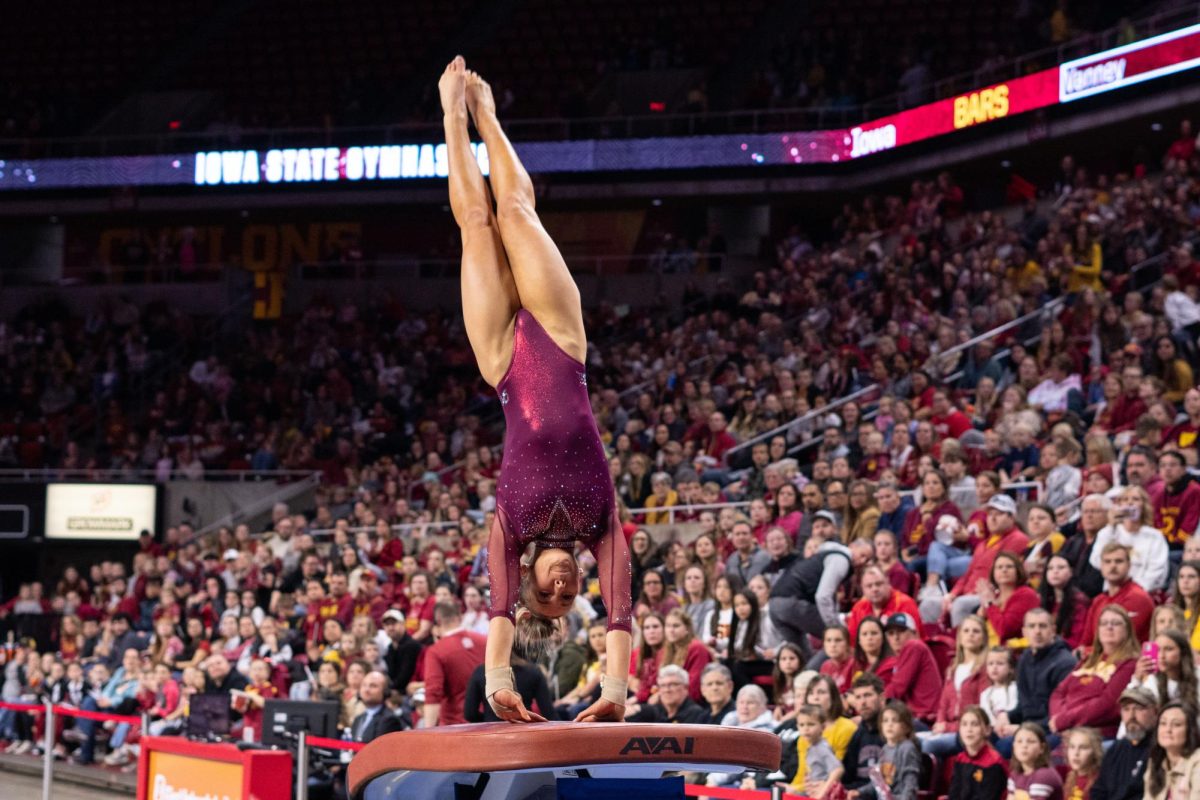Objections to “safe” youth sports fields
November 1, 1995
In his article of Oct. 20, Matthew Seifert is to be congratulated for an excellent job in covering the complex children’s radiological health issue at the Youth Sports Complex, Inc. (YSCI) field now being constructed in southeast Ames adjacent to the old Ames Waste Water Treatment Facility (WWTF).
I am writing this to rebut statements made in an interview by Siefert with the Iowa Department of Public Health (IDPH), and to amplify some other points of the article.
One. The IDPH statements in support of the YSCI field are couched with classic examples of obfuscation that only serve to confuse.
I have been concerned with community health affairs from having lived several years as a “downwinder” in eastern Washington State from the radioactively contaminating U.S. Hanford Nuclear Reservation and its plutonium bomb production. The DOEand its contractors at Hanford had 50 or more ways of saying there was never any harm to the public! There was terrible harm to public health.
Currently, health authorities there are reconstructing the radiological incidents of the past 50 years, trying to relate them to potential causes of high cancer, multiple sclerosis, tumors, mutations and other diseases in the area.
The problem at the YSCI field is much smaller than the Hanford debacle, but similar because the contamination of some 40 years from Ames Lab research work on radioactive thorium bomb materials that were released for some three years into the Ames sewer system, winding up as thorium laced radioactive sewage sludge stored above ground at the old Ames WWTF site. Given a drying sun, rain, wind and other disturbances the radiologically contaminated WWTF site has contaminated the surrounding area including the YSCI field. In essence, the old Ames WWTF site was a nuclear waste dump.
So when the IDPH spokesman stated that, “We (i.e., the IDPH) are convinced the site (YSCI field) is safe,” the question is: Safe for what and for who?” Such a statement does not coincide with the IDPH-contracted Oak Ridge Institute of Science and Education (ORISE) soil and water test measurements taken at the old Ames WWTF and the YSCI field.
Two. Siefert quotes IDPH spokesman as saying, “The IDPH contends the entire field has been cleaned within federal [standards].”
Not only do I object to IDPH giving the impression that the field is clean but strongly object to IDPH’s use of the word “standard.” Even as the IDPH and DOE financed ORISE report states, the numbers used by IDPH and others are but only “guidelines.” This means they are not standards and such guideline numbers are unacceptable as actual standards below which children’s safety is assured. Unfortunately, such guidelines, over time and with misuse, have indeed become “de facto standards” used when convenient to prove a pint.
Three. From interviews with Ad Hoc committee members, Siefert reported that “federal standards (sic) are rated for adults and not for children.” (Adults could probably best be read as “general public.”)
To make matters worse, according to Ames pediatrician, Dr. William McCormack, infants and rapidly growing children are several times more susceptible than adults to cellular damage from ionizing radiation radiation that can lead to cancer and other related diseases. Thus, such generic guidelines are not meaningful to give “unrestricted” permission for children to use the YSCI field and the old Ames WWTF site.
Four. Many health professionals are very critical as to how such guideline numbers IDPH hides behind were ever established in the first place. As opposed to pulling some number out of a hat (as has been done), the guidelines were most likely derived from giving short-lived animals high doses of ionizing radiation and then projecting the results to long-lived humans who are mostly subjected to normal low-levels of background radiation such as radon, cosmic rays and X-rays.
Many health professionals also consider that ionizing radiation affects animals and humans differently, with most radiation induced diseases occurring years and even decades after exposure. Radioactive particles enter the body to affect body organs unfortunate when these particles strategically lodge themselves at critical body points from swallowing and inhaling or getting into the bloodstream as a result of scratches, cuts and abrasions on the play fields.
Five. IDPH states that “there is [no] problem on those soccer fields as far as the IDPH is concerned.” Unfortunately such an umbrella statement has given a green light for the City of Ames and the YSCI organization to proceed without further investigation when there have been several other suitable, non-controversial locations for a youth sports complex in Ames.
Six. What did the IDPH mean in its statement that “the (ORISE) report confirmed something that we already knew: The problem was discovered, and it was contained.” Knew? Contained? When is a nuclear waste dump “contained” The ORISE report data shows that the field is several times “not clean” as compared to the rest of Ames. Even if a (millions of dollars) Superfund cleanup were conducted.
The Ad Hoc Committee believes the only way to determine how safe the YSCI field is, is to compare the ORISE test measurements taken at the field with the ORISE background readings in Ames proper. Parents will then know how many times the risk is for development of cancers and other related diseases from their children playing on the field as compared to where they are now playing in the parks, schools and backyards of Ames proper.
The Ad Hoc committee numbers from the ORISE data, finds the minimum “worst case”scenario to be 2.4 times the Ames background. This exposure does not take into consideration the inevitable and unknown radioactive “hot spots” that undoubtedly are there.
This is a straight forward approach an approach that disturbs those who base their case on untrustworthy guideline numbers.
Thus, the YSCI field is contaminated and will continue to be as the shallow-to-deeply embedded radioactive particles in the soil and subsurface water keep working their way downhill from the old Ames WWTF onto and into the field as they have done for some 40 years, and the YSCI field cannot be quickly and cheaply “cleaned” because a relative few tons of soil have been removed.
Merle Prater is a member of the Ad Hoc committee to review the location of the Youth Sports Complex Field.





